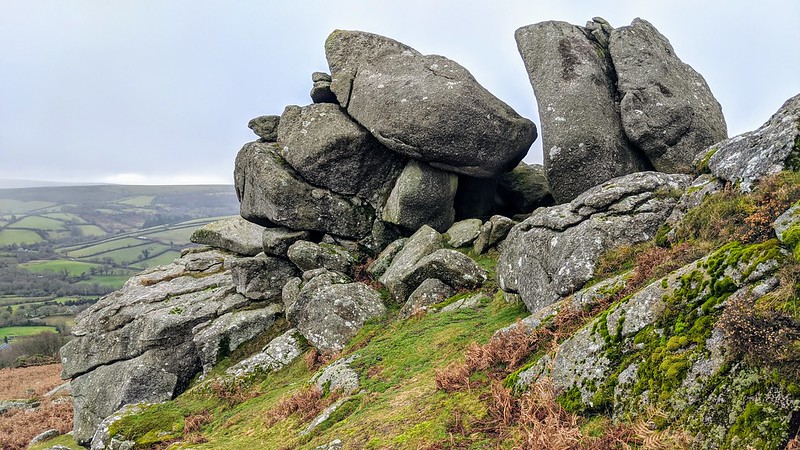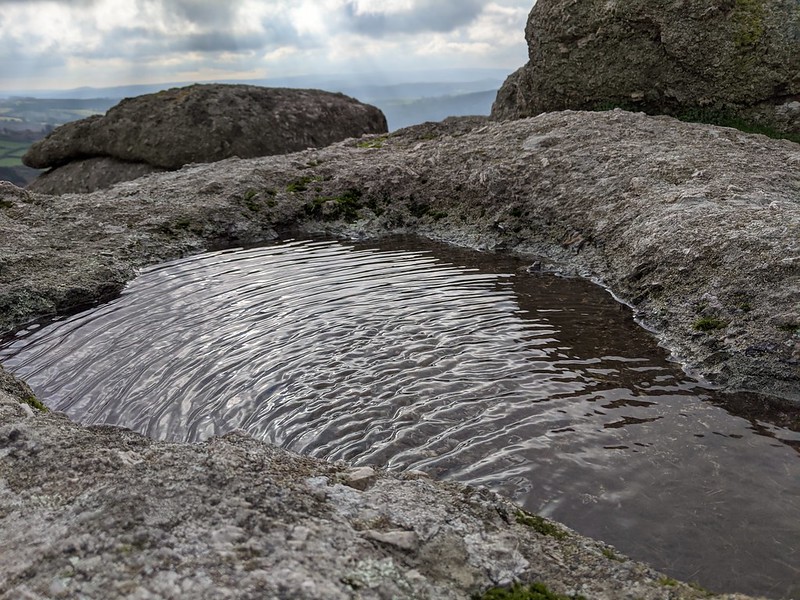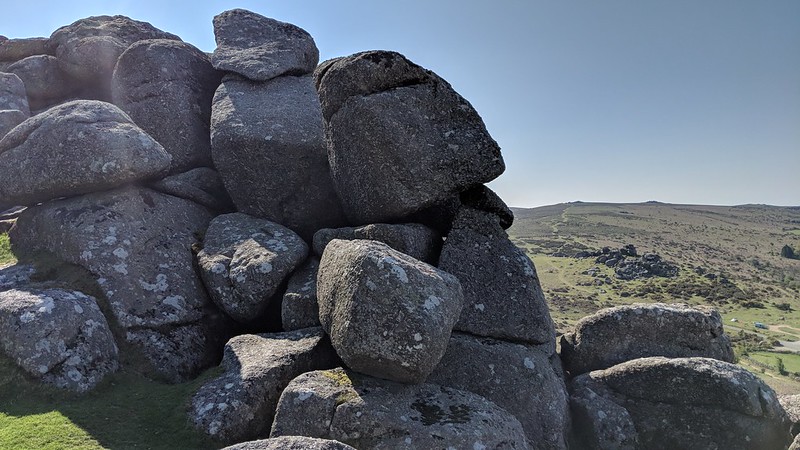TORS OF DARTMOOR
a database of both lesser- & well-known rocks and outcrops
Bell TorBel Tor  Bell Tor sits heavily at a break in the valley side below Chinkwell Tor and above Bonehill Rocks which collectively tower above Widecombe in the Moor. It is a huge rockpile that rises abruptly from Thornhill Lane and its magnitude ensures it is not eclipsed by its somewhat modest elevation on the side of a hill below the crest.  The tor is most impressive and best viewed when ascending the wide, grassy path from the road beneath Bonehill Rocks to the south. This perspective reveals an awesome chasm with an irregularly shaped boulder trapped between the two granite walls at the top. Upon reaching the back of the tor, which is flanked by a plateau of short-cropped grass, you will notice that there are a couple of smaller outcrops on the western shoulder. Worth (1953) notes that the granite in this area is that of a coarse grain and this seems to have resulted in minimal jointing in the tor's southern aspect, which has militated against the rate of erosion and led to many of the rocks to become huge, rounded boulders that are stacked on top of one another. There is a dense concentration of feldspar crystals that are speckled in the surface of the granite.  There are some fine rock basins on the tor, one of which is on the summit itself. In 1859 G.W. Ormerod appears to describe this basin; "On Bell Tor, to the east of the East Webber, there is a large basin that well exhibits the atmospheric action on the granite." After rainfall and in a strong breeze, the water in the basin can be seen rippling across the surface. Writing much later Eric Hemery (1983) provides further details; "There are several rock-basins, one 25-27 inches in diameter, five inches deep and having a small channel; a tilted rock bears a partly formed basin and another forming on the tip of the rock..." The author also observed that "on the east pile of the tor is an irregularly shaped basin roughly three feet by two, its side in one place nine inches deep."  To sit atop Bell Tor on a clear day is to enjoy some of the finest views in Devon, and perhaps the very best is the one looking down on the village of Widecombe in the Moor to the southwest, which is marked by the unmistakable Church of St. Pancras, the so called 'Cathedral of the Moor' on account of its tall crenelated spire rising up from the valley floor. Due south the rugged heap of Bonehill Rocks rises above the road and, left (east) of this, you cannot fail to spot the twin bosses of Hay (Hey) Tor off in the distance and, in front of them, the dual rockpiles of Holwell Rocks.
| ||||||||||||||||||||||||||||||